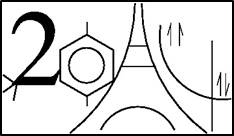The 50 year old Woodward-Hoffmann (W-H) rules[1] to predict the stereoselectivity of the pericyclic reactions are revisited using topological approaches. By definition, periciclyc reactions evolve via a cyclic aromatic transition state (TS) of delocalized electrons where bond making and bond breaking occur simultaneously in a cyclic array. Using the orbital symmetry conservation, W-H proposed a list of rules of thumb able to predict the mechanism and hence the stereoselectivity of pericyclic reactions. In spite of their initial succes, W-H rules are no longer valid if the cyclic delocalization of electrons is broken at the TS, giving rise to the so-called pseudopericyclic reactions [2]. Much work has been devoted to show that this electron circulation may be smartly characterized by the topology of the electron localization function (ELF) [3]. Recently it was shown how the combined analysis of the NCI method and ELF may be employed as a visual tool to understand the electron reorganization along an IRC [4]. As observed in the cycloaddition of ethene (figure 1), NCI isosurfaces in the reactants (bottom left, green isosurface) elvolve continously to ring tension in the products(bottom right, red isosurface) through an asummetric TS with twoincoming covalent interactions (top, green and dark blue isosurfaces), being possible to preclude the appearence and disappearence (catastrophes) of ELF basins (orange isosurface). In the present work similar ELF/NCI analyses are applied to some examples of pericyclic and pseudopericyclic reactions.
[1] R. B. Woodward, R. Hoffmann. Angew. Chem. Internat. Edit. 8 (1969) 781.
[2] D. M. Birney. J. Am. Chem. Soc.
[3] E. Matito, J. Poater, M. Solà. ChemPhysChem 7 (2006) 111.
[4] N. Gillet, R. Chaurdet, J. P. Piquemal. J. Chem. Theory Comput 8 (2012) 3393.
- Image

 PDF version
PDF version

